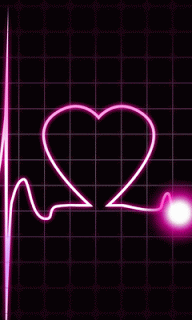
Salty Sam’s Fun Blog for Children
Number 428
Pluto
Hello Everyone

As you already know, Henry loves watching the night sky with his telescope and learning about space.
He asked me an interesting question this week.
He told me that he had found an old book that had Pluto as one of the nine planets in the Solar System and in pictures of the Solar System that he found on the lnternet – Pluto wasn’t there.
He asked me if it had disappeared.
The answer is, luckily, no.
Pluto is definitely still there; but has been redefined.
lt is no longer called a planet. So it can’t be classed as one of the planets of the Solar System.
Pluto was discovered in 1930, named after the Roman god of the underworld, and called the ninth planet of the Solar System right up until 2006 when it was reclassified as a dwarf planet.
You could also call it a ‘world’ as it is a large, solid body in space.
lt is situated in an area of space called the Kuiper Belt. This is pronounced Ky-per.) The Kuiper Belt has trillions of small icy objects in it, like Pluto, but mostly smaller.
lt is found further out than Neptune, the furthest planet from the Sun in the Solar System.
These bodies in the Kuiper Belt are made from water, ammonia and methane and are frozen left-overs from the formation of the Solar System.
From 1992 onwards, the Hubble Space Telescope (launched in 1990) found other bodies of a similar size to Pluto in the Kuiper Belt. Eris was almost the same size as Pluto; in fact it was 27% more massive – that is nearly a third bigger. lt was discovered in 2005.
After finding that Pluto was not a planet alone in that part of space, it was reclassified.
The discovery of new worlds at the outer edges of the Solar System made scientists rethink their definition of a planet.
There were three things a planet had to have or do.
- lt had to orbit the Sun.
- lt had to be large enough for it to have gravity mould it into the shape of a ball. (Meteorites are smaller and have irregular shapes. They look like big rocks you would see on Earth.)
- lt had to have enough gravitational power to throw objects out of its way as it travelled in its orbit around the Sun.
Pluto was sphere that orbited the Sun, but it could not clear its path and neither could many of the other worlds similar to Pluto that live on the outer reaches of the Solar System. So Pluto was redefined in international agreement.
Quaoar was discovered in 2002, Sedna and Haumea in 2003 and Makemake in 2005. (This is pronounced Mackee-mackee.)
Pluto is smaller than our moon.
Pluto has five known moons of its own. The first one to be discovered was Charon in 1978. lt is about half the size of Pluto. lt is a sphere like our moon.
The other four moons are Kerberos, Styx, Nix and Hydra and they were all discovered in the early years of this century. They are not all round like our moon.
lt takes 248 years for Pluto to make one orbit around the Sun and each day (the time it takes to revolve on its axis once) is 6½ Earth Days.
Pluto is about 40 times further out from the Sun than Earth is. lt is 5.9 billion kilometres from the Sun.
A spacecraft called New Horizons was launched by NASA in 2006. lt was the fastest test probe they had launched to date.
NASA stands for The National Aeronautics and Space Administration, by the way if, you didn’t know. lt is an independent agency of the United States Federal Government. lt carries out research and development.
Aeronautics is the science and development of aircraft.
NASA is famous throughout the world for its space research.
New Horizons took 9.5 years to travel out to the far edge of the Solar System to fly past Pluto. lt was a journey of 4.8 billion kilometres. The probe travelled at 31,000 miles per hour. lt was less than 3 metres in length.
lt sent back data about Pluto in July 2015; then continued on its journey.
Pluto is very cold, about minus 230 degrees Celsius. lt has an atmosphere with a blue sky. The atmosphere is not like our air on Earth. lt is made up from different gases.
Pluto has less gravity than Earth.
Pluto has lots of geographical features, like mountain ranges made of water ice. lts surface has different colours: black, dark orange and white.
lt is two-thirds rock and one-third ice.
Pluto is covered in craters, (they were made by objects flying in from space and hitting the surface over billions of years) over 5,000 of them, some up to 50km across, except for one large heart-shaped area which is flat.
lt is called Tombaugh Regio or Pluto’s Heart.
The western part of Pluto’s Heart it called Sputnik Planitia.
This flat plain, made from frozen nitrogen, methane and carbon monoxide, covers about one million square kilometres.
A heat source deep underneath may be the reason this plain is flat. lt may be there is radio-activity deep in the planet causing this area to be heated up from beneath and ‘ironed out’.
This would mean that this dwarf planet is an active planet. That means there is activity on the planet.
After New Horizons had flown past Pluto it continued its journey to find out more about the Kuiper Belt.
And now Henry is going to find out more about the Kuiper Belt because he didn’t know about it before!
lf you like my blog, please support it by telling all your friends and followers about it.
Thank you!
And see you again next Fun Friday!
Love and kisses
Salty Sam

www.christina-sinclair.com


Bill and Bob’s Joke of the Week![]()
![]()
Bill: What was the first animal in space?
Bob: The cow that jumped over the Moon?
Bill: No!
Bob: Mickey Mouse looking for Pluto?

Salty Sam © Christina Sinclair 2015
Unauthorized use and/or duplication of material from this blog without express and written permission from this blog’s author and owner is strictly prohibited.
Links may be used to www.christina-sinclair.com

Picture Gallery
 No! Not that one!
No! Not that one!
 Pluto with the heart-shaped plane
Pluto with the heart-shaped plane

!




 THE SALTY SAM NEWS DESK
THE SALTY SAM NEWS DESK

This week, Miss Pringle told her class to learn a poem off by heart so that they could recite it in front of the class.
Well, a lot of the children felt really nervous about doing this because they worried that their mind might go blank right in the middle of the poem.
And that would be really embarrassing!
Emily said that it might be a good idea to just learn a short poem and then it would not be so hard to remember.
Bill wondered if it wouldn’t be cheating just to learn a really short one.
Emily said that a poem was a poem, no matter how long it was and they could even write their own which would be more impressive.
So the Awesome Foursome gathered together in Henry’s attic playroom and had a poetry writing session.
Then they practised reading their poems out.
Then they practised reciting them without looking at the piece of paper they were written on.
They decided to write limericks because they are short, funny and the rhyming makes them easy to remember.
The poems were funny and made the whole class laugh – even Miss Pringle.
When you give your class something to do, you just never know what they will turn up with!

And here are the poems…
There was a man from Argyle
Who met everyone with a smile
Some people thought it was cheesy
He thought it bright and breezy
After all, it was just his own style!
By Bill
There was a young man called Marc
Who jogged very day in the park
The dogs all chased him
(And his friend Jim)
So they started running round in the dark
By Henry
There was a young man from York
Who loved to talk and talk and talk
He was really very chatty
It made him quite happy
Attempts to silence him all came to nought
By Emily
There was a young man from Panama
Who wanted to buy a new car
It sounds really funny
But after saving all his money
He only had enough for one tyre!
By Bob


*********************
TO ADVERTISE ON THIS BLOG
PLEASE CONTACT:
christina.sinclair.ads@aol.co.uk
*********************

 Quick Quiz
Quick Quiz
What do these phrases mean?
- the heart of the matter
- hasn’t the heart
- l knew in my heart
- Head over heart
- to give your heart away




lt’s the Weekend!

HOW TO MAKE JUGGLlNG BALLS
If you would like to improve your juggling skills it can take a lot of practise to get really good.
If you drop one of these soft balls and it bonks you on the head it won’t hurt.
You can knit three balls in the same colour or three balls of different colours.
You can even knit all the panels different colours.
You will need six pieces for each ball.

If you would like to embroider a motif on the panels using Swiss darning, do this before you sew the panels together.
The ball in the picture has die pips on each face.

JUGGLING BALLS (KNIT 18)
Using 4mm knitting needles and green dk yarn cast on 9 stitches
Knit 11 rows of stocking stitch
Cast off purlwise
TO MAKE UP
- Sew the panels together using over-sew stitching with right sides together
- Make sure you encase all the ridges so that you have an even surface on the outside of the ball
- Turn the ball right sides out when you have one more seam to sew up
- Stuff the ball and finish sewing up the last seam with over-sew stitching or ladder stitching.

Please note that the material on this blog is for personal use and for use in classrooms only.
It is a copyright infringement and, therefore, illegal under international law to sell items made with these patterns.
Use of the toys and projects is at your own risk.
©Christina Sinclair Designs 2015


Quick Quiz Answers
- the heart of the matter – the central issue
- hasn’t the heart – no enthusiasm
- l knew in my heart – l just surely knew, without perhaps even knowing how l knew
- Head over heart – making a decision using cold logic rather than emotion
- to give your heart away – to fall in love




I love Salty Sam. He is a groovy character.
l love you too Summer! : )
This blog is the best one I have found for children. It has so much to read and so many activities to keep children amused.
lt is a lot of hard work to write this blog every week, but l am so glad that it is appreciated by my audience. Thank you for writing in with your comment Charlene.